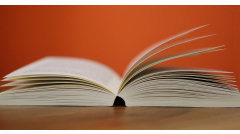In a world overflowing with distractions and complexity, finding clarity and simplicity in your writing space can be transformative. Inspired by the tranquil philosophies of The Tao of Pooh, this guide will help you create a minimalist writing environment that fosters creativity and focus. Embrace the gentle wisdom of Pooh and his friends as you cultivate a serene workspace that reflects the peace of a truly minimalist lifestyle.
Imagine walking into a space designed for flow, where clutter can’t touch your productivity. This guide isn’t just about decluttering; it’s about creating an oasis where words can blossom naturally. With practical steps rooted in simplicity, we will explore how to strip away the excess and celebrate the pure joy of writing in a space that inspires and rejuvenates.
The Tao of Pooh and The Te of Piglet, authored by Benjamin Hoff, elegantly weaves the wisdom of Taoism through the beloved characters of A. A. Milne's enchanting stories. By illustrating how the playful spirit of Pooh and Piglet embodies the principles of simplicity, harmony, and understanding, Hoff invites readers to appreciate life's intricacies without the burden of overcomplication. This unique approach offers insights into living authentically and joyfully, promoting a deep connection with both oneself and the world around us.
Workspace Essentials
Creating a minimalist writing workspace inspired by "The Tao of Pooh" involves embracing simplicity and focusing on essentials that enhance creativity and concentration. A fundamental item is a clear writing surface, which can be as simple as a sturdy wooden desk or a well-designed writing table. This surface acts as a blank canvas, devoid of distractions, encouraging the flow of ideas. When clutter is minimized, the mind can wander freely, much like the gentle and carefree spirit of Pooh himself. Opt for a desk that suits your style but remains functional; the sheer presence of dedicated space reinforces your commitment to writing.
A supportive chair is equally important, playing a crucial role in your writing comfort and productivity. Look for an ergonomic chair that promotes good posture and supports long hours of work without fatigue. Consider chairs crafted from natural materials, aligning with the themes of simplicity and nature prevalent in "The Tao of Pooh." This not only adds an aesthetic appeal to your workspace but also cares for your physical well-being, allowing you to immerse deeply into your writing without pain taking the focus away from your thoughts. Additionally, you'll need a few necessary tools, such as a quality notebook, a reliable pen, and perhaps a digital device if you are inclined toward typing. Each of these items plays a significant role in facilitating your writing process and minimizes the chance of distraction from less meaningful items.
- A clear and open writing surface
- An ergonomic chair for comfort and support
- A quality notebook to capture ideas
- A reliable pen that feels good in your hand
- A minimal setup for digital tools if preferred
Decluttering Process
Embarking on a journey towards a minimalist writing workspace can be profoundly rewarding. Inspired by the serene teachings found in "The Tao of Pooh" and "The Te of Piglet," this decluttering process encourages you to simplify your environment, making room for clarity and creativity. Begin by addressing your existing writing space. Remove everything from your desk, shelves, and drawers. Lay all items out so that you can view them clearly. This initial step lets you understand the sheer volume of belongings that have accumulated.
Next, establish distinct categories for each item. Sort belongings into 'keep,' 'donate,' and 'discard' piles. The 'keep' category should only consist of items that bring you joy, serve a specific purpose, or enhance your writing experience. For example, a beautiful notebook or your favorite pen can spark inspiration. The 'donate' pile can include supplies you no longer use but are in good condition, allowing others to benefit from your generosity. The 'discard' pile should contain items that are broken, outdated, or no longer useful. This triage approach does more than just declutter; it refreshes your psychological landscape, manifesting in enhanced creativity and productivity.
- Consider revisiting your 'keep' pile; can you minimize it even more?
- Utilize clear storage solutions to maintain organization post-decluttering.
- Embrace the idea that less is more—focus on quality over quantity.
Color and Atmosphere
The impact of color on mood and creativity cannot be overstated, especially in a minimalist writing workspace inspired by The Tao of Pooh & The Te of Piglet. Soothing colors such as soft greens, gentle blues, and muted earth tones can serve as a foundation for a tranquil environment. These hues are not only refreshing but also evoke a sense of calmness and clarity, akin to the serene spirit of A.A. Milne's beloved characters. By choosing these colors for the walls and décor, you create a nurturing atmosphere that encourages mindfulness and creative flow.
To further enhance the calming atmosphere, consider the strategic use of natural light, which plays a vital role in shaping mood and productivity. Large windows that invite sunlight can brighten your workspace, reduce stress, and make it easier to focus on your writing. Additionally, incorporating plants is a simple yet effective way to bring life and breath to your environment. Indoor plants like snake plants or pothos not only purify the air but also add a touch of nature, making your workspace feel more inviting and aligned with minimalist principles. Their understated elegance reinforces the essence of simplicity and serenity.
- Consider painting walls with pastel shades for a soothing effect.
- Opt for sheer curtain fabrics to maximize natural light while maintaining privacy.
- Incorporate minimalistic furniture with clean lines that harmonize with your chosen color palette.
- Add a few low-maintenance plants to enrich your workspace and promote well-being.
Creating a Routine
Establishing a writing routine that echoes the minimalist principles found in "The Tao of Pooh" and "The Te of Piglet" requires intentionality and simplicity. Embrace a time-blocking approach to maximize your writing productivity while minimizing distractions. Start by identifying your most creative times of the day. Whether it’s the serenity of early mornings or the quietude of late nights, dedicate these blocks to focused writing sessions. Aim for 25- to 50-minute intervals, punctuated with short breaks to rejuvenate your mind. This rhythm reflects the natural flow of life outlined in the philosophies of Taoism, allowing you to write with clarity and purpose.
Limit distractions by creating an environment that nurtures concentration. Consider implementing the “one thing at a time” philosophy. Turn off notifications on your devices, silence your phone, and create a designated writing area that’s free of clutter. Surround yourself with only what you need: your writing tools (notebooks, pens, or a laptop), and perhaps a cup of tea or fresh flowers to inspire creativity. Consistency is key. Treat your writing sessions as sacred time, akin to a meditation practice. Engage in mindfulness techniques to center yourself before writing, such as deep breathing or a brief moment of gratitude, letting the tranquil wisdom of Pooh and Piglet guide your thoughts.
- Choose ideal writing times
- Utilize time-blocking for focus
- Minimize external noise and notifications
- Practice mindfulness before writing
- Maintain a clutter-free writing space
Inspiration Board
Creating a minimalist inspiration board can serve as a powerful tool for nurturing creativity, drawing from the gentle wisdom and simplicity found in “The Tao of Pooh” and “The Te of Piglet.” Begin by selecting a medium for your inspiration board, such as a corkboard, which allows for easy rearrangement of images and quotes, or a digital platform like Pinterest, which can be accessed anywhere and keeps your ideas uncluttered. The key is to create a space that feels energizing yet serene, echoing the fundamental principles of simplicity and clarity. This approach not only fosters creativity but also maintains a clear focus on what truly inspires you.
When curating your images and quotes, focus on those that resonate deeply with you and your creative pursuits. Consider the following tips to enhance your inspiration board:
- Choose visuals that symbolize tranquility, nature, and simplicity, evoking the serene essence of Pooh and Piglet’s adventures. Look for images that represent harmony, such as tranquil landscapes or minimalist art.
- Incorporate quotes that resonate with the themes of mindfulness and simplicity, promoting clarity and focus. For instance, snippets like “Things just happen. What’s meant to happen is meant to happen” can remind you to embrace the flow of creativity.
- Utilize symbols that connect with your personal journey, like tiny representations of favorite things or elements of nature, such as a small twig or a leaf, embodying simplicity in everyday life.
- Whether using yarn, washi tape, or digital tools, aim for an aesthetic that is visually pleasing yet minimal to avoid overwhelming your senses.
Writing with Intention
Creating a minimalist writing workspace, inspired by "The Tao of Pooh" and "The Te of Piglet," fosters an environment where clarity and simplicity reign. To write with intention, start by decluttering your physical and mental space. Remove distractions—both tangible and intangible—that hinder your focus. This could mean tidying your desk, choosing soothing colors, or selecting simple yet elegant writing tools that inspire creativity without overwhelming your senses. Consider using a small notebook or a single pen, like those minimalist tools featured in "The Tao of Pooh" for an uncomplicated writing routine. Each object should serve a purpose, encouraging you to embrace simplicity and clarity in your work.
Focus on articulating your core message, which allows for intentional writing without unnecessary complexity. An effective exercise is the "One Sentence Challenge": distill your writing goal into a single, clear sentence. This not only sharpens your focus but serves as a guiding light throughout your writing process. Further engage with your writing by regularly revisiting and refining this core sentence, ensuring your work remains aligned with your intentions. Additionally, consider these strategies:
- Create a dedicated writing time free from interruptions.
- Utilize mindfulness meditation to clear your mind before writing.
- Set specific, achievable writing goals each day to build momentum.
- Reflect on your writing intentions weekly to maintain clarity and purpose.
Mindful Breaks
In the spirit of embracing simplicity as depicted in *The Tao of Pooh* and *The Te of Piglet*, taking mindful breaks during writing sessions becomes a profound practice for infusing clarity and creativity into your work. These breaks serve as essential pauses that allow your mind to reset, much like how Pooh and Piglet find joy in the least complicated moments of life. Engaging in mindful breaks can help alleviate the mental clutter that accumulates while writing, ultimately enhancing your focus when you return to your tasks. Activities such as walking, meditating, or deep breathing not only provide a refreshing change of pace but also cultivate a deeper connection to the present moment, echoing the essence of simplicity found in these beloved stories.
To integrate mindful breaks effectively, consider scheduling them into your writing routine. An effective guiding framework might look like this:
- Write for 25 minutes, allowing focused work.
- Take a 5-minute break: stand up, stretch, and walk around your space.
- After two cycles, take a longer break of 15 minutes: indulge in meditation or simply breathe deeply, letting go of any tension.
- During these breaks, engage your senses—listen to the surrounding sounds, observe your environment, and reconnect with your breathing.
This routine is inspired by Pooh’s poignant simplicity and Piglet’s gentle wisdom, allowing your writing space to flourish with creativity. Remember that each mindful moment can inspire clarity and ignite a deeper appreciation for the writing journey.
- Keep a mindful break journal: jot down insights or reflections you gain during these pauses.
- Explore nature during your walks to deepen the connection between your writing and the world around you.
Digital Minimalism
Creating a minimalist writing workspace is about more than just decluttering your physical environment; it also involves streamlining your digital space. Drawing inspiration from *The Tao of Pooh*, you can cultivate simplicity by embracing the philosophy of intentionality and clarity. Start by organizing your digital files. Create a folder structure that resonates with you, categorizing documents by projects or themes, similar to how Pooh categorizes his adventures. Use clear and concise naming conventions to make searching for files feel effortless. For instance, instead of vague folder names like "Writing," opt for "Children's Stories" or "Essay Drafts." This way, you quickly locate what you need without the confusion of excess clutter.
Utilizing writing software efficiently is another step towards digital minimalism. Applications such as Scrivener or Ulysses offer a clean interface that encourages focused writing without unnecessary distractions. They allow you to keep related content organized within one project, making it easy to switch between outlines, drafts, and notes. Additionally, limit your online distractions by using tools like Freedom or Cold Turkey, which block distracting websites and help you stay committed to your writing goals. Consider using a simple note-taking app like Simplenote or Bear that minimizes features to ensure that you stay focused on your ideas rather than the app itself.
- Keep only essential documents in your work folder; archive older projects in another location.
- Regularly audit your files and remove anything that no longer serves you.
- Use simple, distraction-free writing apps to maintain your focus.
Reflective Writing Practices
Creating a minimalist writing workspace inspired by *The Tao of Pooh* and *The Te of Piglet* invites a gentle yet profound engagement with reflective writing practices. Embracing simplicity not only declutters your physical environment but also frees the mind, allowing for clarity in expression. Consider incorporating a few key practices into your routine that align with the philosophies of these beloved characters. Simple writing tools—like a blank notebook, a favorite pen, and a quiet corner—can become your harbor for self-exploration and deeper reflection.
One effective way to cultivate clarity and gratitude in your reflections is by using journaling prompts. These prompts help streamline your thoughts and emotions, creating space for meaningful insights. Try starting with questions like:
- What made me smile today?
- What lessons have I learned from recent experiences?
- How can I bring more simplicity into my life?
Throughout your reflective practice, keep in mind the elements of mindfulness that *The Tao of Pooh* highlights. Approach your writing with an open heart and the desire to discover rather than to impress. Embrace the process without judgment, allowing the words to flow freely. This openness not only enriches your writing but also fosters personal growth. The art of reflective writing can indeed transform your workspace into a sanctuary for creativity and self-discovery.
- Engage regularly with these prompts.
- Identify spaces where you feel inspired and free from distractions.
- Make your writing a habit—small, consistent practices lead to greater insights.
End-of-Day Wind Down
Creating a calming evening routine based on the principles found in *The Tao of Pooh* and *The Te of Piglet* can greatly enhance your minimalist writing workspace. Embrace simplicity by cultivating a peaceful atmosphere that encourages reflection and relaxation after a busy writing day. Begin by taking a moment to review what you accomplished throughout the day. This practice not only provides a sense of closure but also reinforces the value of your efforts, allowing you to express gratitude for your creativity and productivity.
Next, shift your focus to planning for the next day. Jot down key tasks or ideas that you want to explore in your upcoming sessions, which will help ease the transition from one workday to the next. Engage in a relaxing activity that resonates with you, such as reading a few pages from a book that inspires you or enjoying a short walk outside. This gentle activity helps clear the mind of lingering thoughts while inviting clarity and peace into your evening. A calm transition from work to personal time is essential for your mental well-being. Incorporate the following practices into your routine:
- Set a specific time to close your workspace and start winding down.
- Use a journal to reflect on your thoughts and feelings at the end of the day.
- Practice mindfulness through deep breathing or meditative exercises.
- Disconnect from digital devices to minimize distractions and promote relaxation.
- Indulge in a favorite hobby, like sketching or journaling, to shift your focus away from work.
Why We Chose This Product
Choosing to embrace a minimalist writing workspace inspired by The Tao of Pooh aligns beautifully with the delicate balance between creativity and tranquility. Life can often throw us into a whirlwind of chaos, but by creating a calm and organized space, we set the stage for inspired thoughts and authentic self-expression. Every item in your workspace can evoke a sense of comfort, encouraging you to write without the heaviness of distractions.
- Encourages mindfulness in creativity
- Promotes better focus and clarity
- Enhances overall well-being
This guide was chosen to encapsulate the essence of simplicity through the playful yet profound teachings of Taoism as illustrated by Pooh and Piglet. It serves as a gentle reminder that the act of writing can be as delightful and effortless as a honey pot waiting to be discovered.
The Tao of Pooh and The Te of Piglet, authored by Benjamin Hoff, elegantly weaves the wisdom of Taoism through the beloved characters of A. A. Milne's enchanting stories. By illustrating how the playful spirit of Pooh and Piglet embodies the principles of simplicity, harmony, and understanding, Hoff invites readers to appreciate life's intricacies without the burden of overcomplication. This unique approach offers insights into living authentically and joyfully, promoting a deep connection with both oneself and the world around us.










